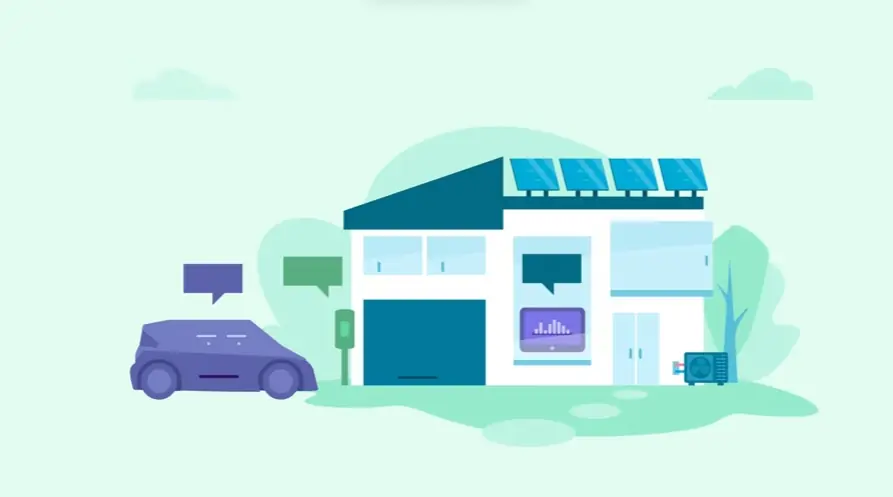
How can we use this video style to guide prospects through key product features?
Guide prospects through product features by structuring the video around a clear narrative, highlighting each feature's benefits with concise explanations and dynamic visuals.
What are the essential visual and narrative components of an effective product demo?
Essential components of an effective product demo include high-quality product visuals, benefit-driven narration, clear feature demonstrations, and a compelling call to action.
How do other companies use instructional demos effectively?
Effective instructional demos focus on user pain points, provide step-by-step solutions, and incorporate real-world examples for relatability and impact.
How do we structure a clear, step-by-step instructional flow?
Structure a clear instructional flow by breaking down complex tasks into digestible steps, using visual cues and transitions to guide the viewer seamlessly.
How can we integrate existing product visuals into the demo?
Integrate existing product visuals, such as photos, videos, and screen recordings, to enhance realism and create a cohesive, engaging experience.
What are the key pre-production steps for a smooth instructional demo?
Key pre-production steps include defining the target audience and objectives, developing a detailed script and storyboard, and gathering all necessary assets.
How can we ensure the video aligns with its core instructional objective?
Ensure alignment with the core instructional objective by focusing on the key message, avoiding unnecessary distractions, and crafting each scene for maximum impact.
How can this video style enhance user engagement and product understanding?
Enhance user engagement and product understanding through dynamic visuals, clear explanations, and interactive elements, creating an immersive learning experience.
How do we tailor a demo to our specific product and user needs?
Tailor demos by understanding user needs and product specifics, customizing the script, visuals, and tone for maximum relevance and impact.
What are the best practices for creating a clear and concise product demonstration?
Best practices for product demonstrations include concise messaging, clear visuals, a strong call to action, and adherence to a simple, user-friendly structure.
What content works best in a product explanation video?
Effective product explanation videos utilize problem/solution scenarios, step-by-step instructions, real-world examples, and testimonials to build trust and engagement.
How can we use this video style to address common user pain points?
Address user pain points directly by showcasing how the product provides practical solutions and delivers tangible benefits, fostering confidence and driving adoption.
What is the ideal timeline for creating a high-quality product walkthrough?
A high-quality product walkthrough typically requires 3-8 weeks, depending on the complexity and scope of the project, with pricing ranging from $1000 to $6000.
How do we present complex information simply in a product tutorial?
Present complex information simply by using clear visuals, concise explanations, and breaking down concepts into digestible steps, avoiding technical jargon.
What are the pitfalls to avoid in an instructional demo?
Avoid pitfalls such as overly technical language, poor audio/video quality, lack of focus, and a weak or missing call to action to ensure demo effectiveness.
Optimizing Learning: Cognitive Science in Demo Design
Building effective visual guides involves understanding how minds process information. Applying principles from cognitive science can profoundly impact how effectively an Instructional Demo Video communicates information and facilitates learning. We can optimize engagement and retention by designing content aligned with how brains naturally learn, unlocking deeper understanding.
Viewers shouldn't struggle to understand. We must minimize mental effort, often called cognitive load. Avoid clutter focus essential information. Chunking complex tasks or ideas into smaller digestible steps prevents overwhelming the viewer. This makes the journey through our product or service intuitive and manageable.
Aligning visual demonstrations precisely with narration is paramount. Discrepancies confuse and increase mental effort. Leverage the multimedia principle using both clear visuals and concise words harmoniously. Apply the coherence principle rigorously removing anything distracting or non-essential. Every element should serve the learning objective guiding the viewer seamlessly.
Guide the viewer's eye using clear visual hierarchy highlighting active areas or buttons effectively.
Ensure optimal pacing allowing sufficient time for viewers to process each new piece of information.
Demonstrate features within realistic scenario-based examples to make concepts tangible and relatable.
Consider tracking viewer drop-off points or incorporating simple checks to gauge understanding and refine content.
Embracing cognitive science transforms demos into powerful learning experiences that resonate deeply with the audience.
Why Advids for Instructional Demo Video?
At Advids, we create high-quality, original Instructional Demo Videos designed to achieve your business objectives. Our unique blend of creative storytelling, cutting-edge technology, and proven experience ensures your vision translates into a compelling and effective demonstration.
Unlocking the Power of Instructional Demo Video:
Customized Instructional Demo Video Solutions: We tailor each project, whether it's a product demo, a training video, or a tutorial, to perfectly match your brand, style, and target audience.
Creative Storytelling Through Animation: Our team of animators and storytellers craft engaging narratives that captivate viewers and clearly explain complex concepts.
Cutting-Edge Instructional Demo Video Technology: We utilize the latest software and techniques to create visually stunning videos that leave a lasting impact, maximizing viewer comprehension and retention.
Advids: Your Trusted Partner:
12+ Years of Proven Success: With over 3400 clients served, we possess a deep understanding of what makes an Instructional Demo Video truly effective. We've completed over 315 successful Instructional Demo Video projects.
Trusted by Industry Leaders: Brands like Razorpay, Ola, Mercedes, the United Nations, Continental, and Mercer rely on our expertise to bring their instructional content to life.
Client Satisfaction Guaranteed: Our commitment to excellence is reflected in over 109 five-star Google reviews, showcasing our talent, creativity, and dedication to client satisfaction.
A Collaborative Approach:
Collaborative Process: We work closely with you from concept to completion, ensuring your vision is realized in the final animation. Your input is valued every step of the way.
Strategic Communication: Open communication is key. We prioritize understanding your needs, target audience, and brand identity to create impactful Instructional Demo videos that resonate with your viewers.
Ready to unlock the potential of Instructional Demo Video for your business with the latest video design trends of 2024? Let Advids be your trusted partner in transforming your ideas into engaging and effective animated experiences.
Checkout some of the projects and work our team at Advids has been producing:
What is a Instructional Demo Video?
An instructional demo video is a visual guide that demonstrates how to use a product or service. It typically involves a step-by-step walkthrough of the product's features and functionalities, often accompanied by voiceover narration and on-screen text. These videos are designed to educate viewers and help them understand how to use the product effectively.
Instructional demo videos are widely used in various industries, including software, technology, healthcare, and education. They are particularly effective for showcasing complex products or processes, providing a clear and concise explanation that is easy to understand and follow.
What do top Instructional Demo Videos have in common?
Mastering instructional demo videos requires a strategic approach focusing on clear objectives, compelling narratives, and user-centric design.
Defined Goals - Specify learning objectives and desired user actions post-viewing. Best practice: Align with broader marketing goals.
- Target Audience Persona - Create a detailed user profile to tailor the video's language and style. Best practice: Use user research data to inform the persona.
- High-Quality Screencasts - Use professional-grade screen recording software and editing. Best practice: Edit for conciseness and clarity, focusing on key actions.
- Engaging Story Arc - Use a problem/solution narrative that resonates with user needs. Best practice: Incorporate relatable characters and scenarios.
- Guided User Journey - Use clear visual cues and on-screen text to guide viewers. Best practice: Employ visual hierarchy to emphasize key steps.
- Key Feature Showcases - Focus on features that solve the most pressing user problems. Best practice: Prioritize features based on user feedback and analytics.
- Solution-Oriented Approach - Show, don't just tell, how the product solves problems. Best practice: Use before-and-after comparisons to highlight impact.
- Real-World Application - Use realistic scenarios and data to demonstrate product value. Best practice: Use case studies or testimonials to build credibility.
- Defined Key Performance Indicators - Track metrics like completion rate, engagement, and conversions. Best practice: Use analytics to measure video effectiveness and inform future iterations.
- Iterative User Testing - Conduct A/B testing to optimize video performance. Best practice: Gather feedback throughout the video development process.
What makes Instructional Demo Videos effective?
Exceptional instructional demo videos are a powerful tool for engaging viewers and effectively communicating product value. They are driven by a clear understanding of the target audience and their needs, ensuring that the information presented is relevant and easy to understand.
Conversational instructional demo videos aim to create engaging and informative experiences for viewers. They use a combination of visual elements, narration, and interactive elements e the learning process enjoyable and memorable.
Methodical instructional demo videos aim to provide viewers with a clear and concise understanding of the product's features and functionalities. They use a structured approach, breaking down complex information into manageable steps and providing clear instructions for each action. This results in a learning experience that is both informative and efficient.
How long should your Instructional Demo Video be?
Optimize instructional demo video length for maximum impact by aligning video type, content, and viewer engagement.
Pre-production Considerations for Determining Video Length:
- What's the video's core message?
- Who's the ideal viewer?
- How many features are shown?
- How intuitive is the product?
- Where will the video be shared?
- What's the video's visual style?
- What's the desired viewer action?
Instructional demo video length guide
| Instructional Demo Types | Video Length | Use Case | Funnel |
|---|
| Screen Recording | 45-90 seconds | Show software/website functionality concisely, highlighting key features | Awareness/Consideration |
| Talking Head | 30-60 seconds | Expert delivers concise product overview, building trust and credibility | Awareness/Consideration |
| Product Demo | 1-2 minutes | Demonstrates product usage, addressing common questions, showcasing benefits | Consideration/Decision |
| Explainer Video | 60-90 seconds | Simplifies complex concepts, using animation or live action, boosting understanding | Awareness/Consideration |
| Tutorial Video | 1-3 minutes | Step-by-step guide, solving user problems, improving user experience, multiple visual styles | Consideration/Conversion |
How to create Instructional Demo Videos?
Mastering user interface demo videos requires a strategic approach. Crafting compelling instructional videos hinges on meticulous planning and seamless execution, resulting in a product that is both informative and engaging.
* Target Audience Define - User personas ensure the video resonates with the intended audience, maximizing impact.- Video Length Determine - Short, focused videos maintain viewer attention and improve knowledge retention.
- Storyboard Develop - A detailed storyboard ensures a clear, concise, and engaging visual narrative.
- Narration Script - Concise, clear scripting improves comprehension and reduces viewer cognitive load.
- Assets Gather - High-quality assets enhance the video's professionalism and viewer experience.
- Screen Footage Record - Smooth, high-resolution recordings showcase the UI's ease of use and functionality.
- Visuals Capture - compelling visuals enhance understanding and make the learning process more enjoyable.
- Voiceover Add - A professional voiceover enhances clarity and adds a polished, authoritative tone.
- On-screen Text - Strategic text highlights key features and actions, guiding the viewer effectively.
- Video Refine - Precise editing ensures a seamless, professional video that maximizes viewer understanding.
Incorporating User Testimonials in Demo Videos
User testimonials can transform our demo videos from simple product showcases into compelling stories that resonate with viewers. Let's explore how we can weave these powerful endorsements into our narratives. Think about how a short clip of a happy customer can instantly make our message more relatable and trustworthy.
Imagine a software demo video where a satisfied client describes how our product streamlined their workflow, or training videos featuring learners who've gained valuable new skills. These real-world examples add depth and credibility, especially in product demo video examples and mobile app demo video examples.
- Show, don't just tell. Instead of simply stating benefits, let users share their experiences. A customer explaining how our app solved their problem is far more impactful than us just listing features.
- Keep it concise and focused. Short, impactful testimonials hold viewer attention. Think 45-90 seconds for screen recording demos, aligning with best practices for concise delivery.
- Diversify voices. Showcase a range of users to represent different segments of our target audience. This builds trust and broadens appeal.
- Prioritize authenticity. Unscripted, genuine testimonials connect with viewers on an emotional level, fostering a sense of community and shared experience.
By strategically incorporating user testimonials, we can create demo videos that not only inform but also inspire action, driving conversions and building lasting relationships with our audience.
Analyzing Demo Video Performance Metrics
Let's explore how to analyze your demo video's performance. Understanding these metrics empowers data-driven decisions, optimizing your content for maximum impact. Remember, it's not just about views; it's about achieving your video's goals. For instance, a high CTR on your marketing videos might indicate a strong call-to-action, while low CTR on service demo video examples might suggest a need for a more compelling offer .
Analyzing metrics helps us understand what resonates with our audience and what needs tweaking. For application demo video examples, focus on metrics like task completion rate and feature usage. Service demo video examples benefit from analyzing customer satisfaction surveys alongside engagement metrics . explainer videos often aim to increase understanding, so track metrics like quiz scores or survey responses.
- Engagement & Retention: Dive into watch time, average view duration, and audience retention to gauge how captivating your content is. identify drop-off points in your videos and refine those sections for better engagement.
- Reach & Visibility: Assess view count and play rate to understand how many people are seeing and starting your video. This is crucial for both marketing videos and explainer videos, ensuring your message reaches a wide audience.
- Action & Conversion: track click-through rate (CTR) and conversion rate to measure how effectively your videos drive desired actions . This is especially important for application demo video examples where you want viewers to try the software.
- Feedback & Insights: Don't underestimate the power of qualitative data. Analyze comments and conduct feedback surveys to gain valuable insights into viewer perspectives. This can be particularly helpful for service demo video examples where understanding customer needs is paramount.
By analyzing these metrics, we can refine our approach, create more effective videos, and ultimately achieve our goals.
Crafting a Compelling Narrative for Demo Videos
Crafting a compelling narrative is key to creating demo videos that resonate. Think of your video as a mini-movie, complete with a beginning, middle, and end. It's about capturing your audience's attention and guiding them on a journey. Let's explore how to weave a story that captivates and converts.
We need to understand our audience, their needs, and their pain points. What challenges do they face, and how can our product or service provide a solution? This understanding forms the foundation of our narrative. For instance, app demo videos can effectively highlight the user interface and core features, demonstrating the app's value proposition in action. Similarly, website demo video examples can showcase key functionalities and user flows, guiding viewers through the platform's features.
- Focus on benefits, not just features. What value does your product bring to the user? How does it improve their lives or solve their problems?
- use real-world examples and relatable scenarios. This makes your message more concrete and believable. Consider incorporating customer testimonials for added authenticity.
- Keep it concise and engaging. Respect your viewers' time and avoid jargon. A brisk pace and clear messaging will keep them hooked.
- Explore different formats. explainer video examples often use animation to simplify complex concepts, making them ideal for introducing a new product or service. onboarding videos, on the other hand, provide step-by-step guidance, helping new users quickly acclimate to the platform and maximize its potential.
By weaving these elements together, we can create demo videos that not only inform but also inspire. A compelling narrative transforms a simple product showcase into a memorable experience, driving engagement and ultimately, conversions.
Managing Expectations During Demo Video Production
Managing expectations in demo video production is crucial for a smooth and successful project. We've covered the essentials of creating compelling demos, from storyboarding to user testimonials. Now, let's navigate the practicalities of managing expectations, ensuring our vision aligns with reality. This proactive approach minimizes surprises and maximizes our chances of creating a video that truly resonates with our audience.
Successfully navigating the demo video production landscape requires a blend of creativity and pragmatism. We need to balance our aspirations with the realities of timelines, budgets, and technical limitations. By acknowledging these factors upfront, we can set realistic expectations and avoid potential roadblocks.
- Realistic Timelines:* Creating high-quality videos, especially software demo video examples, takes time. Factor in pre-production, filming, editing, and revisions. Rushing compromises quality.
- Budgetary Considerations:* Establish a clear budget encompassing all production stages. Explore cost-effective solutions without sacrificing quality. For saas demo video examples, consider prioritizing core features to manage costs.
- Collaboration and Communication:* Open communication between stakeholders is paramount. Value diverse perspectives and foster a collaborative environment. This ensures everyone is on the same page, from creative vision to technical execution.
- Scope Management and Flexibility:* Define a realistic scope for the project, especially for product demo videos. Avoid feature creep that can strain resources. Be prepared for unexpected changes. Flexibility is key in video production. Tutorial videos, for instance, might require additional segments based on user feedback.
By managing expectations effectively, we transform potential challenges into opportunities for growth. This proactive approach empowers us to create demo videos that not only meet but exceed our goals.
Author & Editor Bio
A video producer with a passion for creating compelling video narratives, Jai Ghosh brings a wealth of experience to his role. His background in Digital Journalism and over 11 years of freelance media consulting inform his approach to video production. For the past 7 years, he has been a vital part of the Advids team, honing his expertise in video content planning, creation, and strategy.
His collaborative approach ensures that he works closely with clients, from startups to enterprises, to understand their communication goals and deliver impactful video solutions. He thrives on transforming ideas into engaging videos, whether it's a product demo, an educational explainer, or a brand story.
An avid reader of modern marketing literature, he keeps his knowledge current. Among his favorite reads from 2024 are "Balls Out Marketing" by Peter Roesler, "Give to Grow" by Mo Bunnell and "For the Culture" by Marcus Collins. His results-driven approach ensures that video content resonates with audiences and helps businesses flourish.




